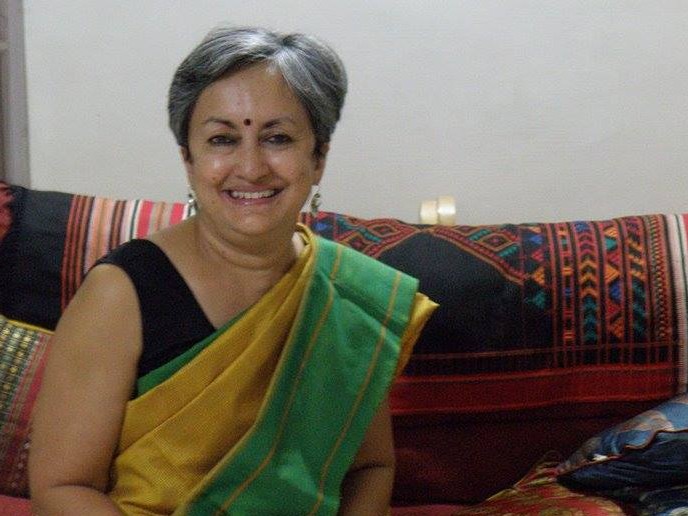We opted for sarees
In June 2013, my Chennai-based friend Rasheeda (known as a feisty, pathbreaking journalist) was to interview IT icon Subroto Bagchi at the launch of a book in which he featured at an upmarket hotel in Bangalore.
I promised her moral support by attending the do with her. But we both faced the usual dilemma: what should we wear?
We opted for sarees. Mine was a Narayanpet silk saree from Andhra Pradesh, one of Ma’s that I liked for its simplicity and elegance. I last wore it over 20 years ago to a wedding at St. George’s Cathedral in Chennai.
…..
Here’s some background on the Narayanpet saree, sourced online of course:
There is a distinct style attached to the Narayanpet sarees, the sarees have a checked surface design with embroidery and the border or pallu have intricate ethnic designs such as a temple. The borders and pallu of the Narayanpet Silk saree are given a contrasted look with small zari designs. Some are plain, though.
Origin and History
Going by historical records, in 1630 AD Maratha king Chatrapati Shivaji traveled to the Narayanpet region, where he camped for a while. When he continued on his journey, a few weavers stayed behind.
These were the weavers who started producing the silk sarees with a distinct design which came to be known as Narayanpet sarees. No wonder then, courtesy the weavers who migrated from the Maratha region to Narayanpet, there is lot of Maharashtrian influence seen in Narayanpet sarees.
Later on, under the rule of Lokapalli Sansathanam, the production of Narayanpet silk and cotton sarees increased dramatically.
Present Day Scenario
Vegetable dyes are used for the Narayanpet sarees. The weaving is a unique process, in which eight sarees are made at one go on a loom. Thus, instead of the standard 7 yards of fabric mounted on a loom, 56 yards of silk are mounted each time,
After the degumming, dyeing and drying process, the actual weaving starts. In the case of cotton sarees, each takes a day to complete a saree; while a silk saree takes about 4 to 5 days.
In 2012, the Narayanpet saree got its Geographical Indicator (GI) registration with the government of India.
Sources of Inspiration
The state of Andhra Pradesh , especially the Mehboobnagar region is known for its extreme climate. It is extremely hot in summer and cold in winter. The weather could have have prompted the Narayanpet silks, which are comfortable to wear round the year because they are lightweight.
Faces behind the Fabric
The early weavers who settled down in the Narayanpet region in the 17th century are the pioneers of this art. The skill has been passed down from generation to generation. The entire weaver community involved in this art is located only in Narayanpet.
Innovations
There are eight threads used in weaving the saree at the borders which help in strengthening the fabric.
Occasion dressing
Narayanpet silk sarees with their strong Maharashtrian influence are quite popular in Maharashtra and are worn during auspicious occasions ~and offered in prayer to a special deity.
In Andhra Pradesh, Narayanpet sarees are as popular as the ikkat sarees from the Pochampalli area and the Uppada silk sarees from the east Godavari region.

